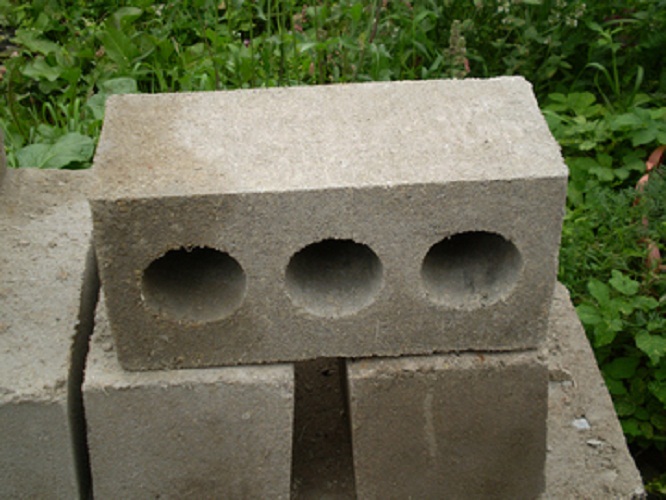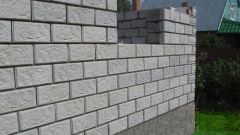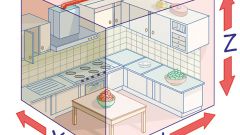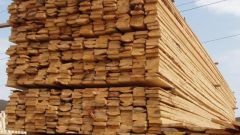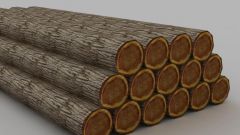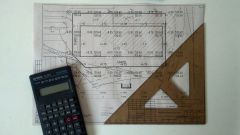You will need
- Internet access, calculator.
Instruction
1
The choice of blocks
Decide the type of blocks that you will build the house. It can be ordinary sand-cement or expanded clay blocks, concrete blocks, aerated concrete blocks and others. Selecting a specific type of block, you need to decide with their size.
Decide the type of blocks that you will build the house. It can be ordinary sand-cement or expanded clay blocks, concrete blocks, aerated concrete blocks and others. Selecting a specific type of block, you need to decide with their size.
2
To determine the required thickness of the walls of the house
Calculate the required thickness of the wall of the house. For this, you first need to calculate the required resistance of the wall of the house to heat transfer, which depends on climatic conditions. This parameter is determined based on gap (degree-day heating period), the values of which can be found in the SNP.
Then, depending on the coefficient of thermal conductivity of materials constituting the wall (selected units and materials the outer and inner veneer), calculated the necessary wall thickness. Its final dimensions are taken into account the size of the used blocks.
The exact method of calculating the thickness of the wall can be viewed on construction sites, for example here: http://www.ibeton.ru/a16.php.
Calculate the required thickness of the wall of the house. For this, you first need to calculate the required resistance of the wall of the house to heat transfer, which depends on climatic conditions. This parameter is determined based on gap (degree-day heating period), the values of which can be found in the SNP.
Then, depending on the coefficient of thermal conductivity of materials constituting the wall (selected units and materials the outer and inner veneer), calculated the necessary wall thickness. Its final dimensions are taken into account the size of the used blocks.
The exact method of calculating the thickness of the wall can be viewed on construction sites, for example here: http://www.ibeton.ru/a16.php.
3
Defines the remaining parameters of the house
Define other parameters of the building: its dimensions (length, width and height), number of floors, the numberm and sizes of Windows and doors, the presence and number of partitions. All these data should be written in the form of a table, so that later it was convenient to count.
Define other parameters of the building: its dimensions (length, width and height), number of floors, the numberm and sizes of Windows and doors, the presence and number of partitions. All these data should be written in the form of a table, so that later it was convenient to count.
4
The calculation of the volume of masonry
Calculate the volume of a monolithic masonry house, which will be equal to the volume of all walls and partitions minus the amount of Windows and doors.
The thickness of the walls should be considered without regard to covering materials.
Partitions are likely to be put blocks of smaller sizes (for example, foam concrete blocks 100 mm thick), so the volume and the number of partition blocks should be counted separately.
Calculate the volume of a monolithic masonry house, which will be equal to the volume of all walls and partitions minus the amount of Windows and doors.
The thickness of the walls should be considered without regard to covering materials.
Partitions are likely to be put blocks of smaller sizes (for example, foam concrete blocks 100 mm thick), so the volume and the number of partition blocks should be counted separately.
5
Determine the number of blocks.
Divide in the previous paragraph, the value for the volume of one unit. The result will give you the number of blocks required for building a house.
It should be borne in mind that this calculation does not consider the presence of seams. To accommodate them, divide the resulting value by a factor of 1,05-of 1.07, which takes into account the volume of masonry mortar with thickness of 10-20 mm.
Keep in mind, though, that the units need to buy with a small margin, so the coefficient that takes into account the amount of joints, you can not apply.
Divide in the previous paragraph, the value for the volume of one unit. The result will give you the number of blocks required for building a house.
It should be borne in mind that this calculation does not consider the presence of seams. To accommodate them, divide the resulting value by a factor of 1,05-of 1.07, which takes into account the volume of masonry mortar with thickness of 10-20 mm.
Keep in mind, though, that the units need to buy with a small margin, so the coefficient that takes into account the amount of joints, you can not apply.
